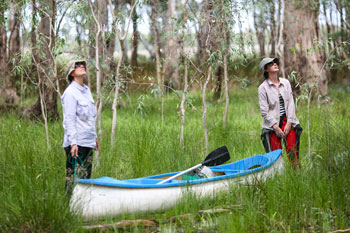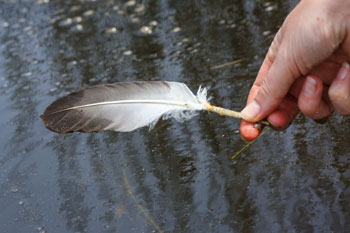Understand the scientific licence or permit requirements for your state or territory. The Feather Map of Australia Project has obtained licences from each state and territory in order for members of the public to help us with this important research. Each state or territory has their own strict rules and regulations, learn more.
Visit a local wetland in your region and collect feathers that you find on the ground or in the water. Please leave any feathers still attached to birds in place!
Take a look around the wetland while you are there and write down any birds you recognise. Please ensure you wash your hands thoroughly after touching the feathers (or wear gloves while collecting).
We also encourage everyone to take lots of photos while collecting to add to our Instagram page.
Place the feathers in an envelope and include the details below by either filling out our Data collection form or simply writing them on a piece of paper:
Send your feathers to the relevant address below by Friday 29 June 2018:
ACT, New South Wales Victoria, South Australia, Northern Territory and Queensland
Feathers collected in ACT, New South Wales Victoria, South Australia, Northern Territory and Queensland should be sent to:
The Feather Map of Australia Project
c/- Dr Kate Brandis
Centre for Ecosystem Science
School of Biological, Earth and Environmental Sciences, Room 508 D26
UNIVERSITY OF NEW SOUTH WALES, SYDNEY NSW 2052
Western Australia
Feathers collected in Western Australia should be sent to:
Feather Map of Australia Project
PO Box 384
WEMBLEY WA 6913
Tasmania
Feathers collected in Tasmania should be sent to:
Feather Map of Australia Project
c/- Vishnu Prahalad
Private Bag 78
University of Tasmania
HOBART TAS 7001
We’ve already received hundreds of feathers from a number of different locations around the country but we still need many more to enable our researchers to use nuclear techniques to help wetland birds and their precious habitats.
Everyone can take part from school groups to birdwatchers - anyone interested in helping preserve our precious wetland birds and environments.
The more feathers we have, the more completed the picture and the better the map!

